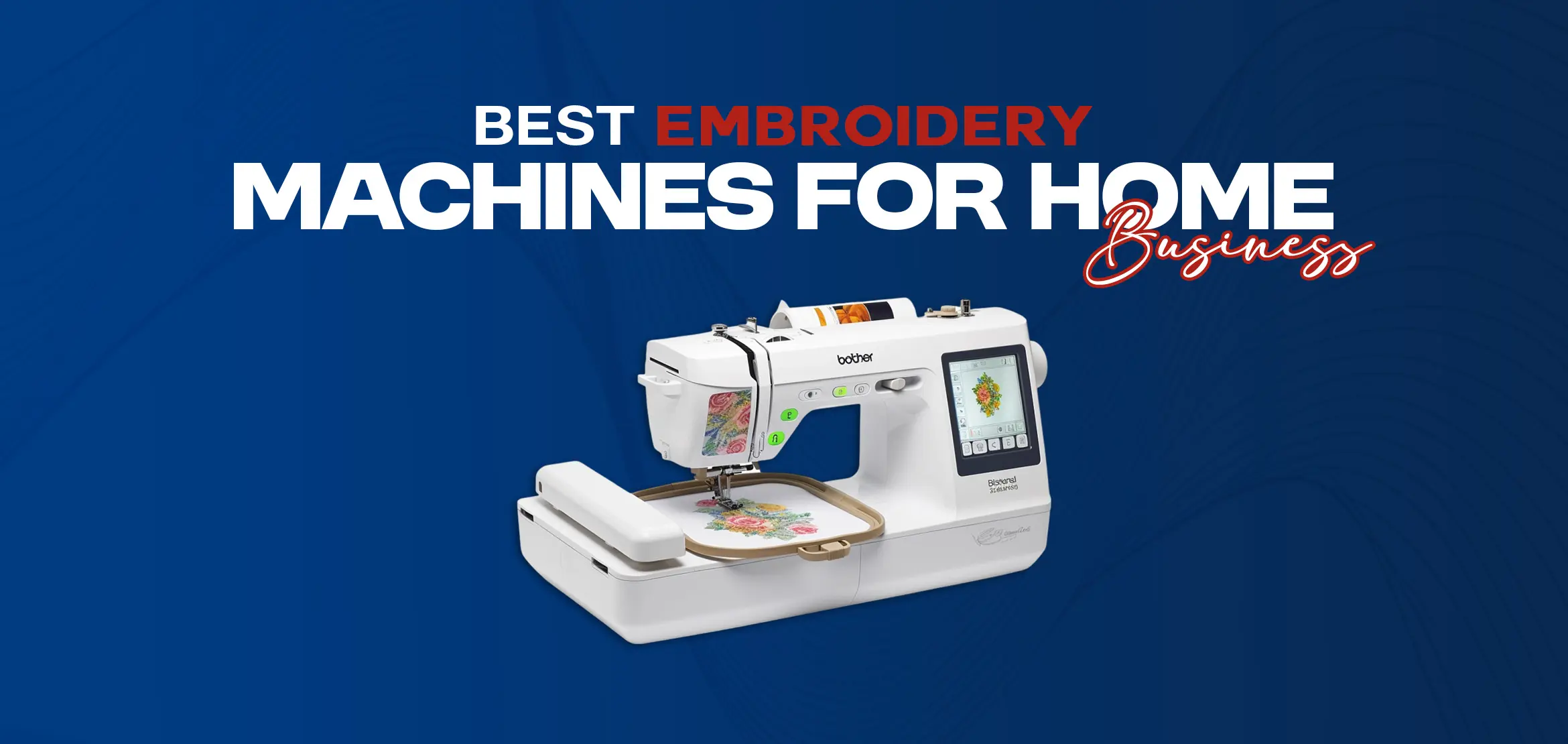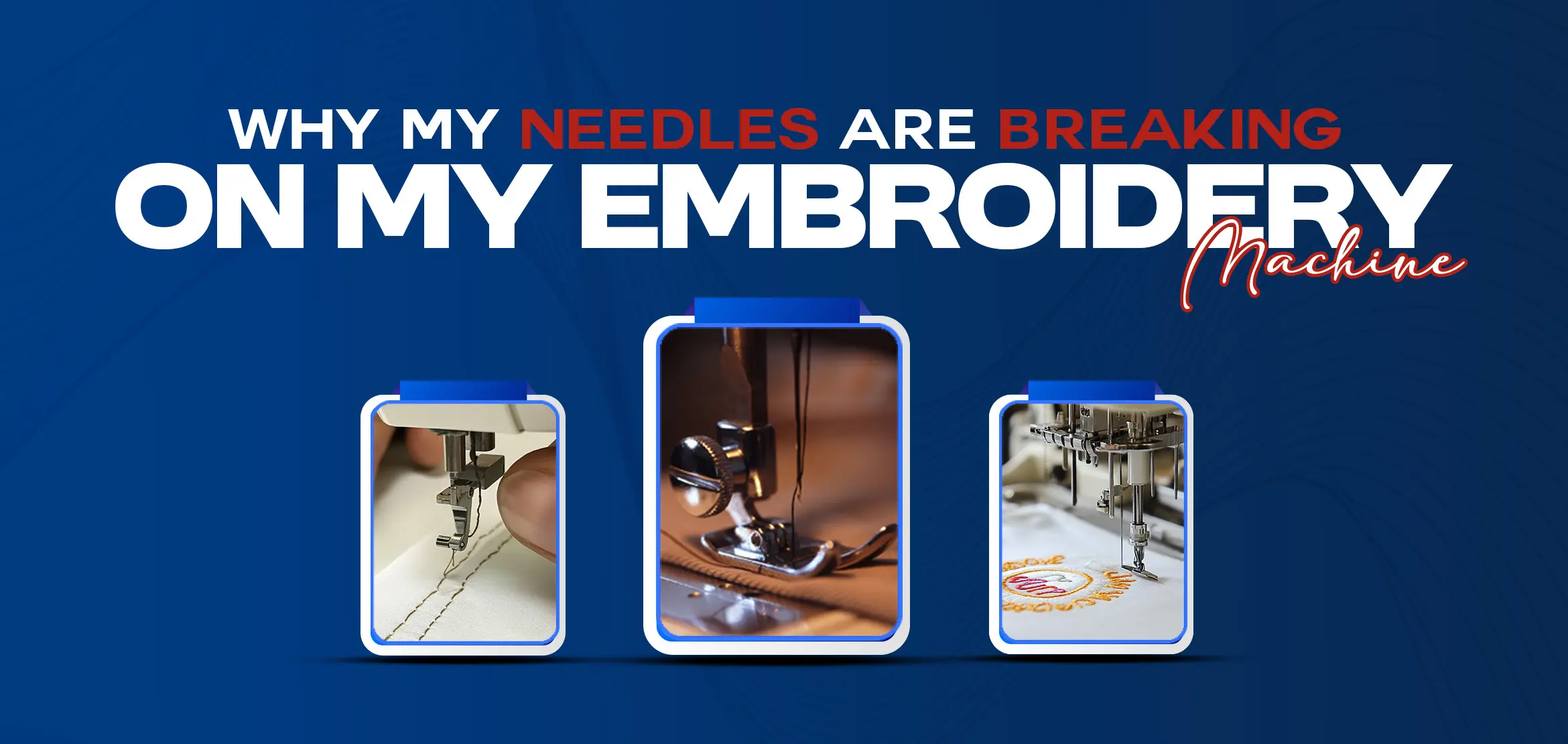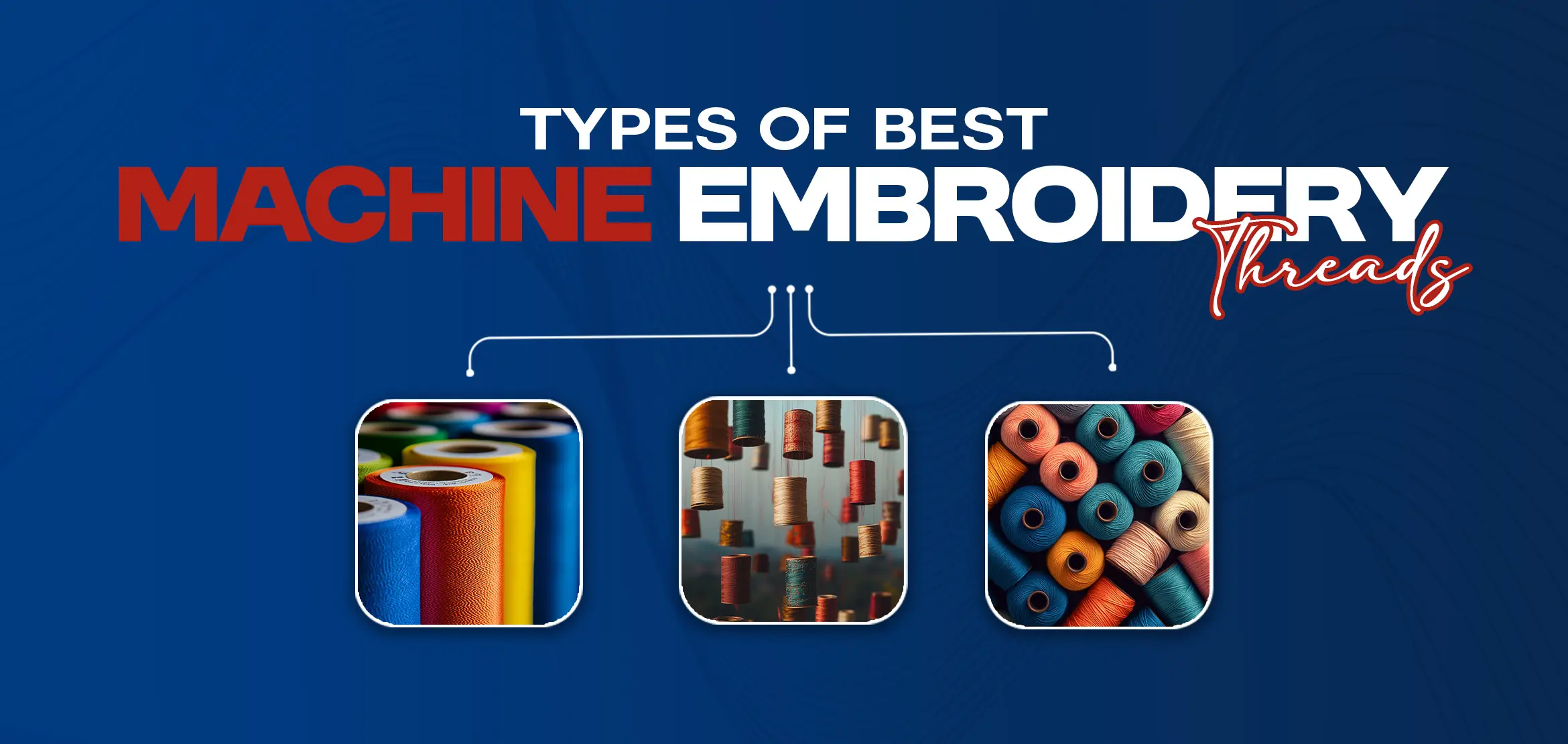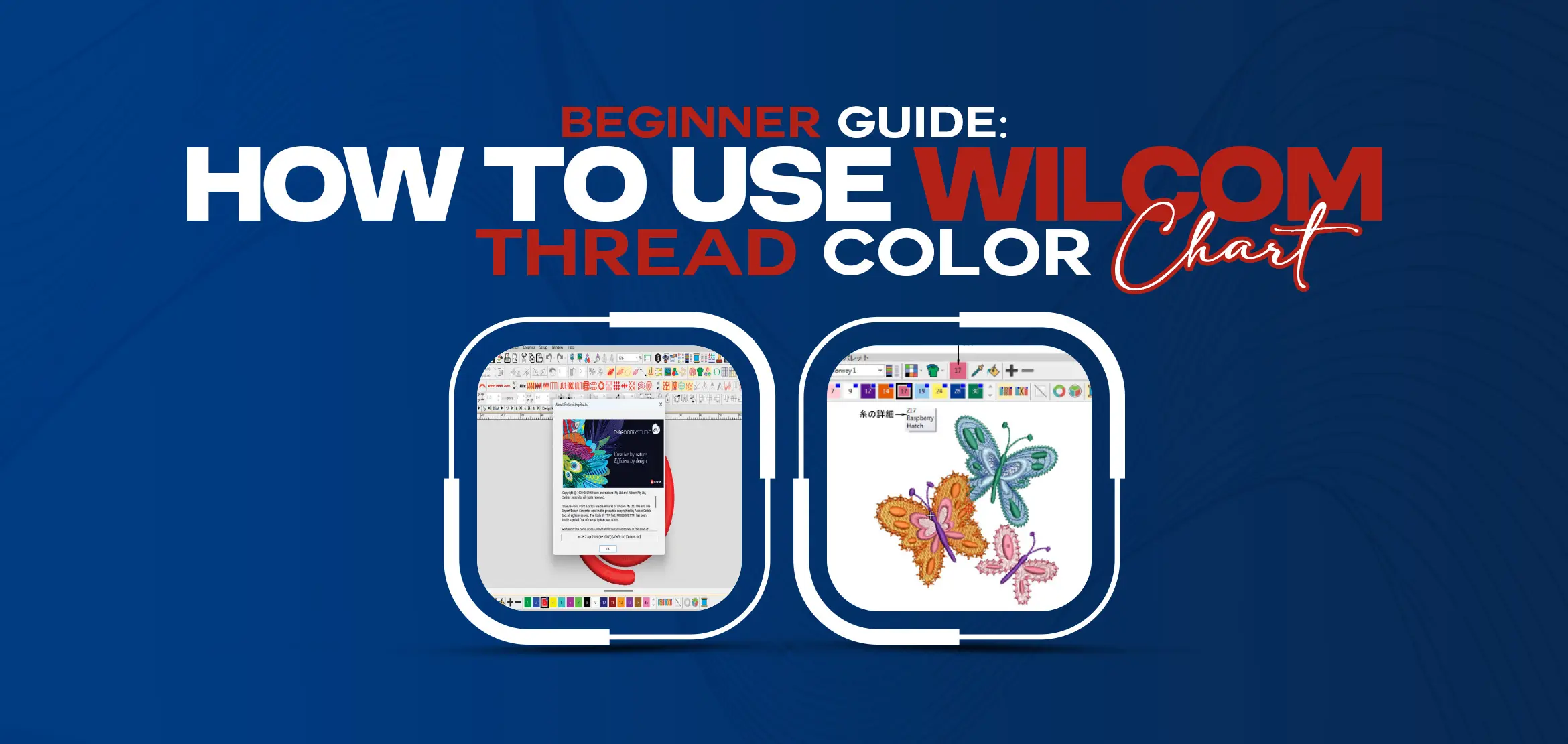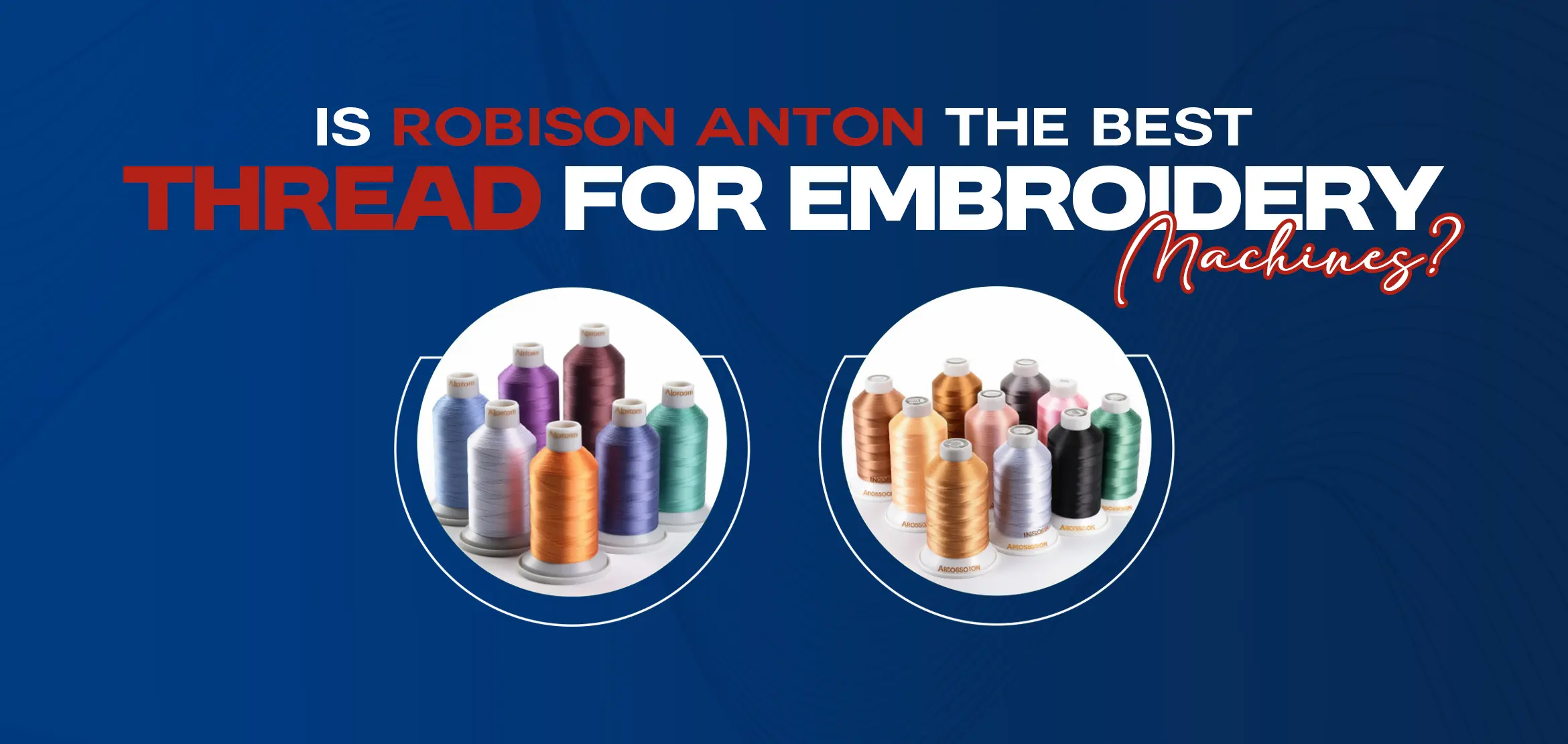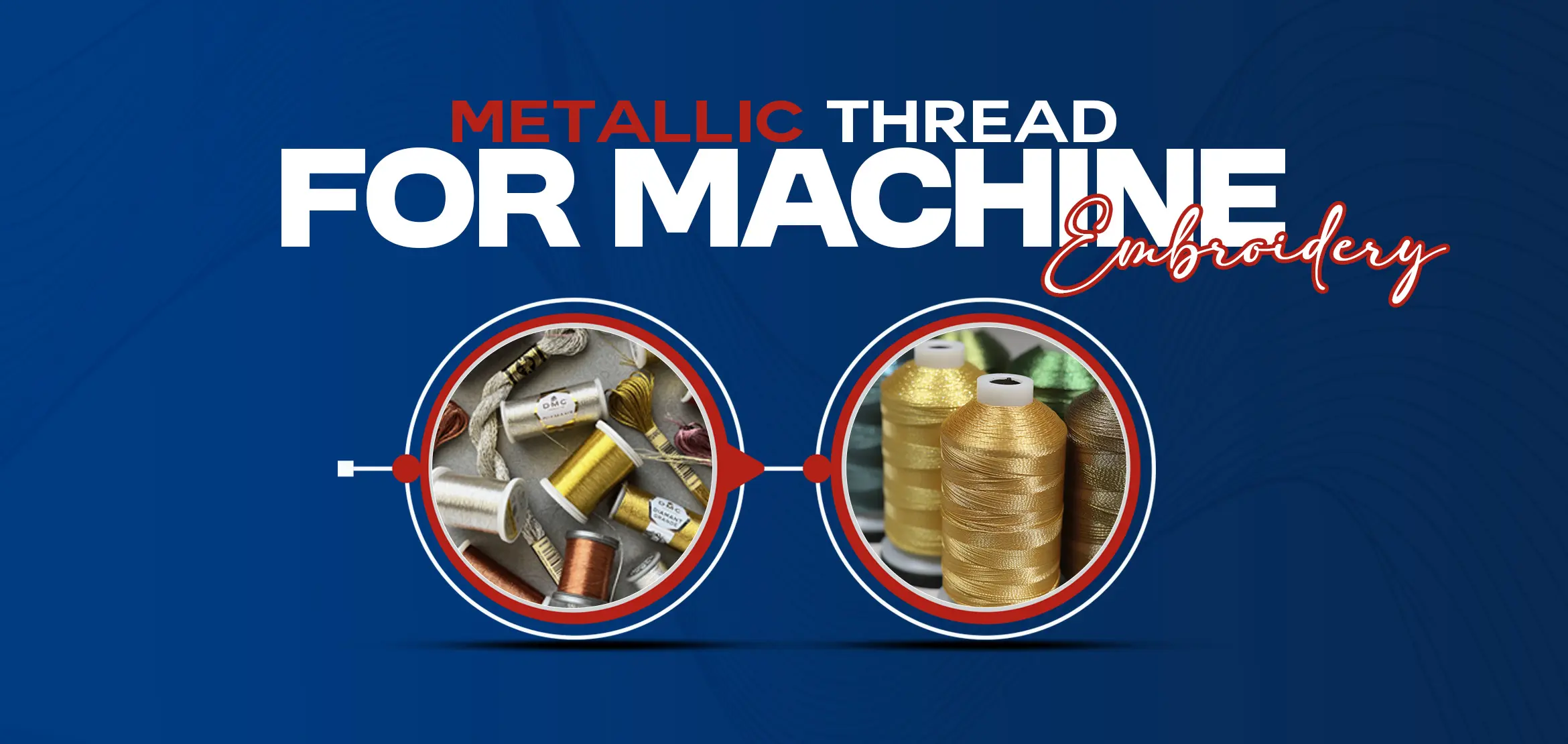
Metallic Thread For Machine Embroidery: Complete Guidec
Table Of Content
- Types of Metallic Thread Available
- Tips for Using Metallic Thread in Machine Embroidery
- 1. Choosing the right needle
- 2. Adjusting tension settings
- 3. Slowing down your machine
- 4. Using a thread stand
- 5. Adding a thread lubricant
- Techniques for Preventing Thread Breakage and Tangling
- 1. Slow Down
- 2. Use a Thread Stand
- 3. Thread Lubrication
- 4. Consider a Topstitching Needle
- Design considerations for using metallic thread
- Embroidery Project Ideas Using Metallic Thread
- 1. Embellished garments
- 2. Home decor accents
- 3. Accessories with flair
- 4. Holiday decorations
- Care and Maintenance of Metallic Thread
- 1. Storage
- 2. Handling
- 3. Cleaning
- 4. Thread replacement
- By following these care and maintenance tips, you can prolong the life of your metallic thread and continue to create stunning embroidery designs that shine.
- Conclusion
Let your creativity sparkle and your imagination soar with the mesmerizing beauty of metallic thread for machine embroidery. Discover the enchantment that comes when your stitches shimmer and shine, creating breathtaking designs that capture attention and make a lasting impression.
Unleash your imagination and let your stitches shimmer with metallic thread. Step into a world of endless possibilities, and watch as your embroidery projects truly come to life.
Types of Metallic Thread Available
There are various types of metallic thread available on the market, each offering a unique look and feel to your embroidery projects.
Flat Metallic Thread: One of the most common types is flat metallic thread, which is characterized by its smooth and sleek appearance. Flat metallic thread is perfect for creating bold, eye-catching designs that demand attention. Its flat surface reflects light evenly, creating a consistent shimmer across your stitches.
Holographic Metallic Thread: Another popular type is holographic metallic thread, which adds an extra layer of dimension and sparkle to your embroidery. Holographic metallic thread is coated with a special film that refracts light, creating a mesmerizing rainbow effect as it catches different angles. This type of metallic thread is perfect for adding a touch of magic and whimsy to your designs.
For those looking for a more subtle shimmer, there are also fine metallic threads available. Fine metallic thread is thinner and more delicate, allowing for intricate detailing and subtle accents. It adds a touch of elegance to your embroidery without overpowering the overall design.
Tips for Using Metallic Thread in Machine Embroidery
Using metallic thread in machine embroidery requires some special considerations to ensure the best results. Here are some tips to help you get started:
1. Choosing the right needle
When working with metallic thread, it's important to use a needle specifically designed for this type of thread. Metallic needles have a larger eye and a special coating that reduces friction, preventing the thread from breaking or fraying. Be sure to select the appropriate needle size based on the weight of your fabric to achieve optimal results.
2. Adjusting tension settings
Metallic thread can be more prone to tension issues, so it's important to adjust your machine's tension settings accordingly. Experiment with different tension levels until you find the sweet spot where the stitches are balanced and the thread flows smoothly. Remember to test your settings on a scrap piece of fabric before starting your actual project.
3. Slowing down your machine
Metallic thread requires a slower stitching speed compared to regular embroidery thread. By reducing the speed of your machine, you allow the metallic thread to pass through the needle and tension discs more smoothly, reducing the risk of breakage or tangling. Take your time and let the machine work at a comfortable pace to ensure the best results.
4. Using a thread stand
Metallic thread tends to be more prone to tangling, especially if it unwinds too quickly from the spool. To prevent this, consider using a thread stand to hold the metallic thread spool separately from the machine. This allows the thread to unwind smoothly and reduces the risk of tangles or knots.
5. Adding a thread lubricant
To further enhance the performance of metallic thread, you can apply a thread lubricant or conditioner to the spool. This helps reduce friction and static electricity, allowing the thread to glide through the machine with ease. Be sure to use a thread lubricant specifically designed for metallic thread and follow the manufacturer's instructions for application.
By following these tips, you can overcome the challenges often associated with using metallic thread in machine embroidery and create stunning designs that truly shine.
Techniques for Preventing Thread Breakage and Tangling
Embroidering with metallic thread can be challenging due to its delicate nature. However, with the right techniques, you can minimize thread breakage and tangling, ensuring a smooth and enjoyable embroidery experience.
1. Slow Down
One of the most common causes of thread breakage when using metallic thread is stitching too quickly. Slow down the speed of your embroidery machine to give the thread enough time to pass through the needle and fabric smoothly. This simple adjustment can make a significant difference in preventing breakage and ensuring clean, crisp stitches.
2. Use a Thread Stand
To minimize friction and prevent tangling, consider using a thread stand when working with metallic thread. A thread stand holds the spool of thread vertically, allowing it to unwind more freely and reducing the chances of it getting caught or tangled as it feeds into the machine. This small investment can save you a lot of frustration and wasted thread.
3. Thread Lubrication
Metallic thread can be prone to friction, which can lead to breakage and tangling. Applying a small amount of thread lubricant, such as silicone spray or thread conditioner, can help reduce friction and make the thread glide more smoothly through the fabric. Remember to follow the manufacturer's instructions when using any lubricants to ensure proper application.
4. Consider a Topstitching Needle
If you're still experiencing thread breakage or tangling despite following the above techniques, consider switching to a topstitching needle. Topstitching needles have larger eyes and a longer, more tapered point, which can help reduce friction and allow the metallic thread to pass through more easily. This needle type is especially beneficial when working with thicker metallic threads or intricate designs.
By implementing these techniques, you can overcome the challenges associated with metallic thread and enjoy a seamless embroidery process. Don't be discouraged if you encounter some hiccups along the way – with practice and patience, you'll master the art of stitching with metallic thread.
Design considerations for using metallic thread
When incorporating metallic thread into your embroidery designs, it's important to consider the overall aesthetic and the specific elements you want to highlight. Here are some design considerations to keep in mind:
1. Contrast: Metallic thread works best when it's used in contrast with other types of thread. Consider pairing metallic thread with a solid color or a matte thread to create a striking contrast that brings out the shimmer and shine. This contrast adds depth and visual interest to your designs, making them more captivating.
2. Placement: Think strategically about where you want to incorporate metallic thread in your design. Metallic thread works particularly well for outlining, adding accents, or creating focal points. Consider using metallic thread for intricate details, monograms, or motifs that you want to stand out.
3. Balance: While metallic thread can add a touch of glamor to your embroidery, it's important to maintain a sense of balance in your design. Avoid using metallic thread excessively, as it can overpower the overall composition. Instead, use metallic thread sparingly to create focal points or highlight specific areas.
4. Experimentation: Don't be afraid to experiment with different techniques and combinations of metallic thread. Try different stitch patterns, layering techniques, or even combining different types of metallic thread to create unique effects. The beauty of metallic thread lies in its versatility, so let your imagination run wild and explore all the possibilities.
By carefully considering these design elements, you can create embroidery designs that effectively showcase the shimmer and shine of metallic thread, capturing attention and leaving a lasting impression.
Embroidery Project Ideas Using Metallic Thread
Ready to get creative with metallic thread? Here are some project ideas to inspire your next embroidery masterpiece:
1. Embellished garments
Add a touch of glamor to your wardrobe by embellishing garments with metallic thread. Whether it's a simple shirt, a dress, or a pair of jeans, metallic thread can instantly transform a plain garment into a statement piece. Consider embroidering a delicate design along the neckline, cuffs, or hemline to create a subtle yet eye-catching accent.
2. Home decor accents
Bring a touch of elegance to your home decor by incorporating metallic thread into pillows, curtains, or table linens. Embroider intricate motifs or monograms using metallic thread to create personalized accents that elevate the overall aesthetics of your living space.
3. Accessories with flair
Make a bold fashion statement with accessories that shimmer and shine. Embroider metallic thread onto handbags, clutches, or even shoes to create unique and eye-catching pieces that showcase your personal style.
4. Holiday decorations
Metallic thread is perfect for adding a touch of festive cheer to your holiday decorations. Embroider delicate snowflakes, stars, or holly leaves using metallic thread to create ornaments, stockings, or table runners that sparkle and capture the spirit of the season.
These project ideas are just the beginning. Let your creativity run wild and explore all the possibilities that metallic thread has to offer. With each project, you'll discover new ways to make your stitches shimmer and your designs come to life.
Care and Maintenance of Metallic Thread
To ensure the longevity and performance of your metallic thread, proper care and maintenance are essential. Here are some tips to help you keep your metallic thread in top condition:
1. Storage
Store metallic thread in a cool, dry place away from direct sunlight, as exposure to heat and light can cause the thread to deteriorate. Consider using thread organizers or storage boxes specifically designed for keeping thread spools neatly organized and protected.
2. Handling
When handling metallic thread, it's important to avoid excessive pulling or tugging, as this can cause the thread to stretch or break. Gently unwind the thread from the spool and guide it through the machine with care to minimize tension and prevent tangling.
3. Cleaning
If your metallic thread becomes dirty or stained, avoid using harsh detergents or chemicals, as they can damage the thread's metallic coating. Instead, gently hand wash the affected area using mild soap and lukewarm water. Rinse thoroughly and let the thread air dry before using it again.
4. Thread replacement
Over time, metallic thread can become brittle or lose its shimmering properties. If you notice that the thread is fraying, breaking frequently, or no longer provides the desired shine, it may be time to replace it. Regularly check your metallic thread for any signs of wear and replace it as needed to ensure optimal results.
By following these care and maintenance tips, you can prolong the life of your metallic thread and continue to create stunning embroidery designs that shine.
Conclusion
The mesmerizing allure of metallic thread for machine embroidery opens up a world of creative possibilities. With its shimmering beauty, metallic thread adds depth and dimension to your designs, captivating attention and leaving a lasting impression. By exploring the various types available and mastering the techniques for using them effectively, you can elevate your embroidery projects to new heights of sophistication and elegance. So, unleash your creativity and let your stitches shine with metallic thread. Take the next step in your embroidery journey today with our embroidery services.
